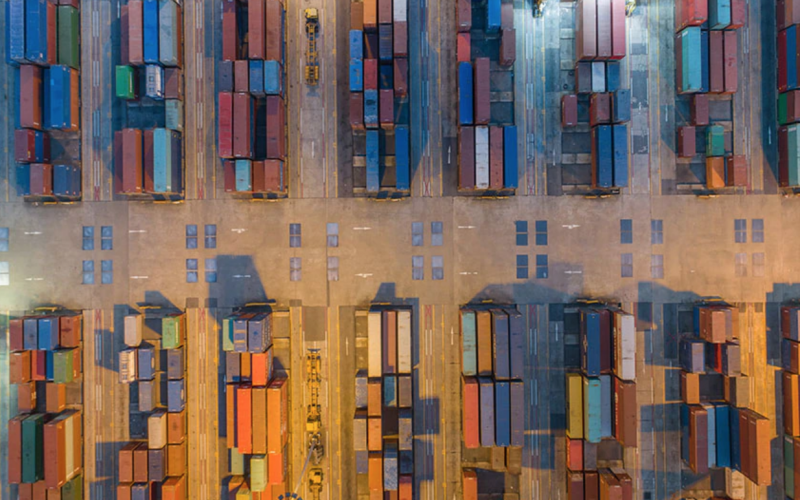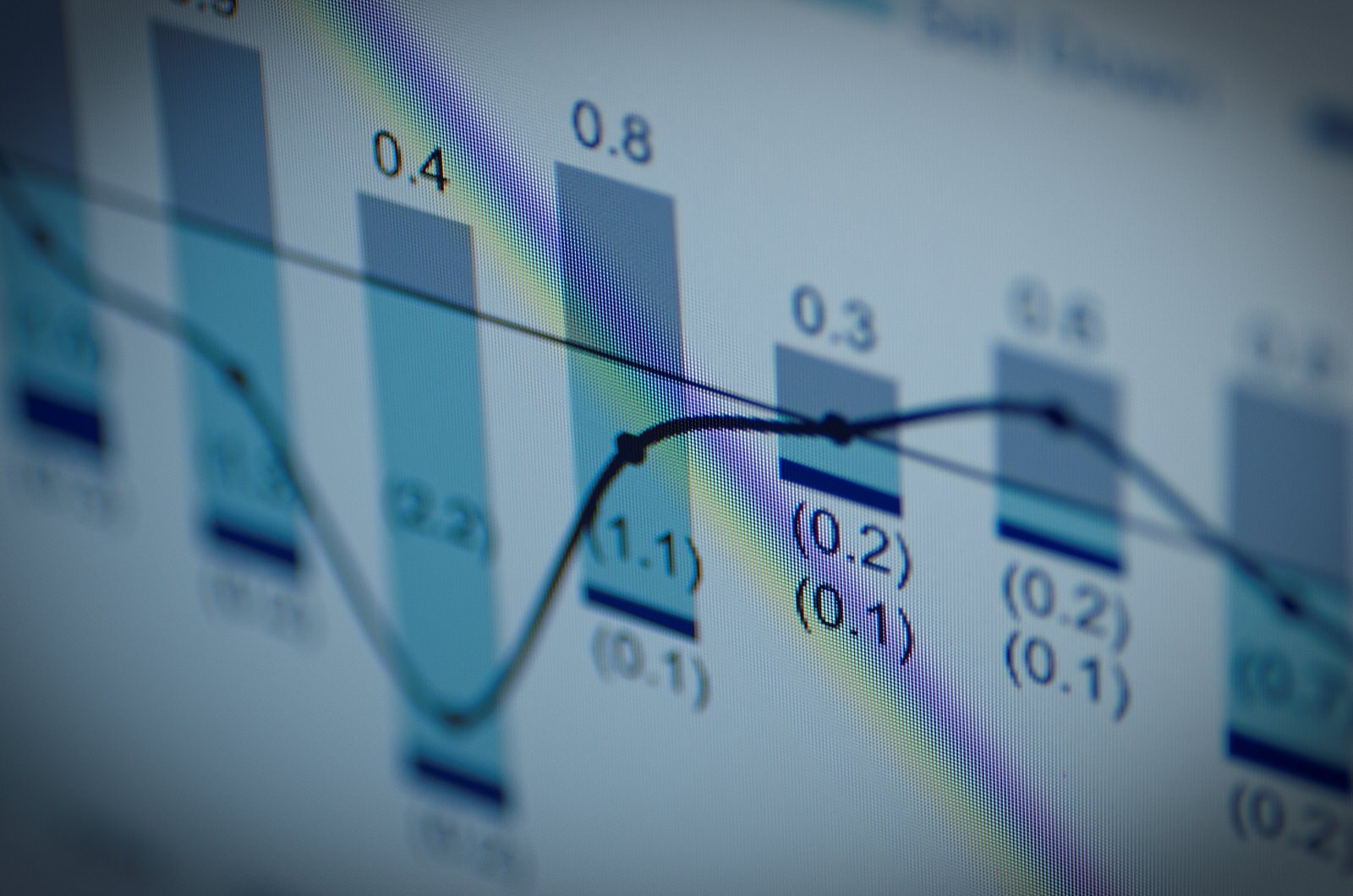by Jeffrey Kleintop, CFA®, Senior Vice President, Chief Global Investment Strategist, Charles Schwab & Co., Inc.
Key Points
- While it’s very early to say the rise in inflation has passed, there are signs that the fastest part of the rebound in inflation might soon be over.
- Raw material prices have pulled back from the highs of early May and supply chains for intermediate goods like semiconductors may be starting to improve.
- If these early signs continue to signal a deceleration of the upsurge in price pressures, market worries over inflation could begin to lessen.
Global prices have been inflating at a rapid pace, lifting inflation-sensitive sectors of the stock market (ex. Energy is the world’s best performing sector in 2021) and driving bond yields higher around the world (ex. the German 15-year bond yield rose above zero for the first time in two years). Google searches for news on inflation have soared. In the chart below, the upward trending line indicates that the “Inflation” search term's relative popularity is increasing—not necessarily that the total number of searches for that term are increasing, but that its popularity compared to other searches is expanding.
Inflation searches are inflating

Source: Google Trends data as of 5/21/2021. Numbers on the Y-axis represents normalized search totals on a scale from 0–100, where the highest point, or top searches, is represented by 100.
While it’s very early to say the rise in inflation has passed, there are signs that the fastest part of the rebound in inflation might soon be over. Since markets tend to react to the “change in the change,” a coming shift to a slower pace of increasing prices could be important for inflation-sensitive assets and central bank actions.
Stuck at Sea
A key reason for the shortage of raw materials contributing to the recent surge in prices is supply chain bottlenecks. Port traffic has been congested, impacting delivery times, which are the most delayed in decades. But, as virus restrictions are loosened and throughput can begin to rebound, the climb in transport costs may ease.
Presently, cost to ship intermediate and finished goods by containership continues to rise. Containerships and the 40-foot box containers they haul are in short because of long delays to unload cargo. According to the world’s largest container ship operator, A.P. Moller-Maersk, routes like Shanghai to Los Angeles, that normally take 14 days, are taking 33 days as ships spend twice the length of the journey at anchor waiting to unload.
However, port congestion is showing signs of easing. At the ports of Los Angeles and Long Beach, the busiest containership ports in the U.S. and currently the most congested in the world, there are now about 20 vessels at anchor waiting to be unloaded. That is a significant improvement from the 30 of a month ago and the first quarter peak of around 40. This could mean more containerships, and their containers, may soon be freed up rather than waiting at anchor.
Logjam breaking at world’s most congested port?

Image depicts cargo vessels at anchor in San Pedro Bay.
Source: Marinetraffic.com as of 5/23/2021.
The Baltic Dry Index is a benchmark for the price of moving raw materials by sea over more than 20 different shipping routes, carrying bulk commodities ranging from iron ore to grain. This index has risen from 500 during the depths of the pandemic-led global recession last summer to over 3,250 in early May. But those prices have dipped back to around 2,800 in recent days and could mark the start of a fade in upward momentum.
Commodity shipping price surge starting to ease?

Source: Charles Schwab, Bloomberg data as of 5/21/2021.
In another sign shipping cost pressures may soon begin to level off, the percentage of on-time ship arrivals at ports around the world has been improving, after falling since June of last year, according to data tracked by Sea-Intelligence. This was echoed in Friday’s Eurozone flash manufacturing Purchasing Managers Index that showed a second month with a slowing increase in the number of companies indicating lengthening delivery times.
Arriving
Improved delivery times results in some products that have been in short supply are finally arriving after their long journey. The April U.S. industrial production report showed that manufacturing output increased by a modest 0.4% in April, apparently held back by a 4.3% drop in motor vehicle production affected by the global shortage of semiconductors. Shipments of semiconductors from Taiwan, the biggest producer of semiconductors, surged in March and are now showing up on U.S. shores. The most recent U.S. trade report revealed that imports of semiconductors jumped to a record high last month and the pace appears likely to continue based on Taiwan’s export data, as you can see in the chart below.
Semiconductors finally arriving

Source: Charles Schwab, Bloomberg data as of 5/21/2021.
This suggests that one of the major supply bottlenecks, the semiconductor shortage, may become less acute in the coming months. Of course, shortages are much broader than just semiconductors, but this is an early sign that one of the first supply shortages may be starting to ease.
Lumbering along
Housing was one of the first industries to boom after the onset of the pandemic last spring. Rising prices of lumber, which translated to rising home prices, are now starting to cool demand. By May of this year, the price of lumber had soared 400% from its low in 2020. Housing data released in May show soaring demand has pushed up home prices in the U.S. (United States Census Bureau), Canada (Canada Mortgage and Housing Corporation), and New Zealand (Stats NZ Tatauranga Aotearoa) by double-digit percentages over the past year. That rise has now met some resistance.
Much of the rise in lumber prices in April and early May was likely due to homebuilders scrambling to meet obligations on the rush of contracts signed in the first quarter. Adapting to market conditions, builders have adjusted their pace as prices of their raw materials have climbed. Data released in May for April showed that new home construction slowed in Canada and single-family housing starts in the U.S. slowed to their second-lowest level since last August.
Lumber prices are starting to react to an easing of demand. Lumber futures contract prices have fallen significantly from the peak on May 7. Although less dramatic, declines since early May can be seen in many other major industrial commodities like iron ore and copper, as well as agricultural commodities like corn and wheat. This is a sign that the supply shortages that resulted in higher prices may be curbing demand across industries.
Commodity prices pullback after surge

Source: Charles Schwab, Bloomberg data as of 5/21/2021.
Assets and actions
Inflation is likely to continue to rise and remain above the average of the last global economic cycle, but the exceptionally rapid pace of the current rise may soon start to moderate. If so, market fears around central banks having to prematurely tighten monetary policy may ease, providing support for stocks.
Despite the rise in inflation, the market’s expectations of future inflation in Europe has only climbed back around 1.5%, back to the level when the European Central Bank last cut interest rates in 2016. It remains a long way from 2.5%, the level at which they last raised rates in 2011, as you can see in the chart below.
Inflation expectations only back to where ECB last cut—not hiked—rates

Source: Charles Schwab, Bloomberg data as of 5/23/2021.
Watching the signs
Since markets tend to react to the “change in the change;” a coming shift to a slower pace of increasing prices could be important for both inflation-sensitive assets and central bank actions.
There are some signs that the sharp rise in prices may be curbing the short-term surge in demand for commodities, capping momentum. Also, supply chains, while still very stretched, may be improving, possibly leading to shortened delivery times later this summer. Combined, these factors could moderate the pace of gains in inflation by late summer, just in time for the annual meeting of the world’s central bankers in Jackson Hole, Wyoming.
While inflation is likely to be higher in the years ahead compared to the past global economic cycle from 2009-2019, if these early signs continue to signal a deceleration of the upsurge in price pressures, market worries over the pace of the rebound in inflation could begin to lessen.
Michelle Gibley, CFA®, Director of International Research, and Heather O’Leary, Senior Global Investment Research Analyst, contributed to this report.
Copyright © Charles Schwab & Co., Inc.















